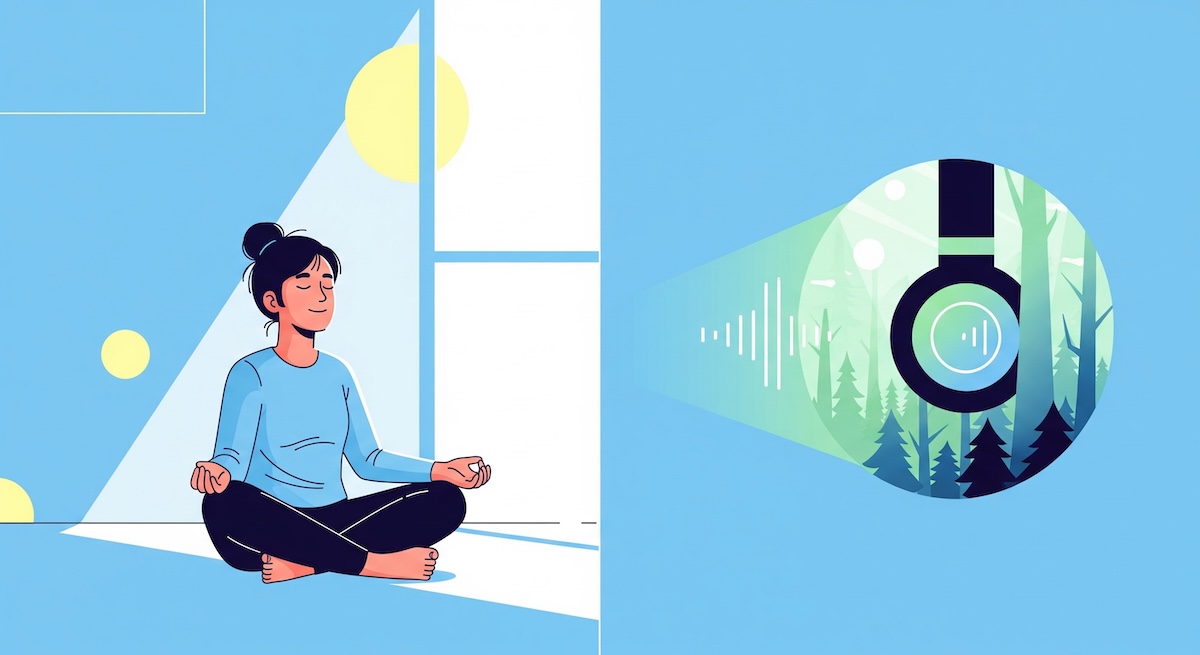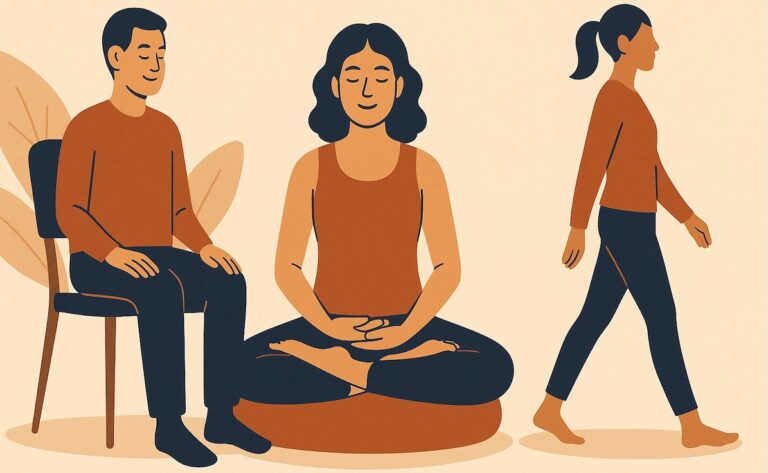You’ve figured out your posture and have an idea of when and how long to practice. Now, what about the soundscape? Should you meditate in silence, or is it okay to meditate with music? Does the environment really matter?
Creating a supportive environment can definitely help, especially when you’re starting out. Let’s explore the pros and cons of music versus silence and how to set the stage for focused awareness.
The Great Debate: Music vs. Silence
This is a common question with no single “right” answer. It often comes down to personal preference and the goal of your specific meditation session.
Meditating in Silence
For many traditional forms of meditation, silence is the preferred backdrop.
- Pros:
- Fewer External Distractions: Allows you to tune into your internal experience more easily; thoughts, feelings, bodily sensations.
- Develops Awareness: You learn to sit with whatever arises, including ambient sounds (a ticking clock, distant traffic), without needing external sound to mask it. This builds resilience and acceptance.
- Simplicity: Requires no extra equipment or selection process.
- Cons:
- Can Feel Harder Initially: If you’re used to constant noise, silence can feel uncomfortable or make inner chatter seem louder at first.
- Ambient Noise: If your environment isn’t truly quiet, unexpected sounds can be jarring.
Meditating with Music or Sounds
Using background audio is a popular choice for many modern meditators.
- Pros:
- Masks Distracting Noise: Helpful if you live in a noisy environment.
- Sets a Mood: Music can help evoke feelings of calm, peace, or spaciousness.
- Provides a Focus Point: For some, gentle music can be less intimidating than pure silence and act as a soft anchor for attention.
- Can Guide the Experience: Specific frequencies (like binaural beats) or guided meditations (which often include music) use sound intentionally.
- Cons:
- Can Become a Crutch: You might become reliant on music and find it harder to meditate without it.
- Can Be Another Distraction: The wrong kind of music (or even music you enjoy too much!) can pull your attention away from your inner experience.
- Finding the Right Track: It takes time to find audio that supports, rather than hinders, your practice.
What Kind of Music Works Best?
If you choose to meditate with music, opt for sounds that stay in the background:
- Ambient Music: Instrumental tracks with minimal melody or rhythm changes. Think drones, pads, and atmospheric sounds.
- Nature Sounds: Gentle rain, ocean waves, flowing streams (ensure they loop smoothly and aren’t jarring).
- Instrumental Tracks: Simple flute, singing bowls, piano pieces specifically designed for meditation (avoid complex classical or pop music).
- Binaural Beats/Isochronic Tones: Specially designed frequencies claimed to influence brainwaves (use headphones for binaural beats). Research their effects if interested.
- Avoid: Music with prominent lyrics, strong beats, dramatic shifts, or anything that makes you want to actively listen or sing along!
Guided Meditations: An Auditory Aid
Remember, guided meditations (often found on apps or YouTube) inherently use sound, the narrator’s voice, often accompanied by background music. These are excellent meditation aids, especially for beginners, providing structure and focus.
Beyond Sound: Other Environmental Factors
While sound is a big one, also consider briefly:
- Lighting: Dim, soft lighting is often preferred over harsh, bright light. Natural light is great.
- Temperature: Ensure you’re comfortably warm or cool.
- Smell: Some people enjoy subtle incense or essential oils, but ensure they aren’t overpowering or distracting. Simplicity is often best.
- Minimizing Interruptions: Turn off phone notifications (except your timer!). Let housemates know you need a few minutes undisturbed, if possible.
Conclusion: Experiment and Find Your Focus
Ultimately, whether you choose silence or sound depends on your preference, your environment, and your intention.
- Try Both: Experiment to see what helps you settle and focus most effectively right now.
- Be Mindful of Dependency: If using music, occasionally try practicing in silence to ensure you’re not overly reliant on it.
- The Goal is Awareness: Remember, the environment is just the setting. The real practice happens within you, noticing your breath, your thoughts, your sensations, whether amidst silence or gentle sound.
Choose the conditions that best support your ability to turn inwards and cultivate awareness.




